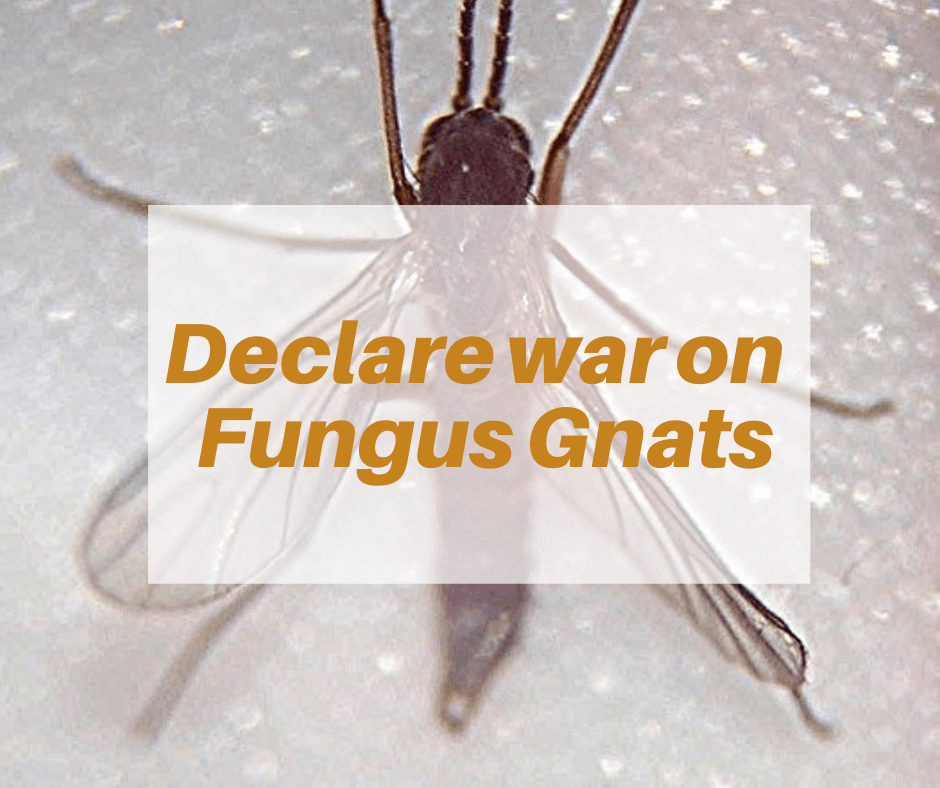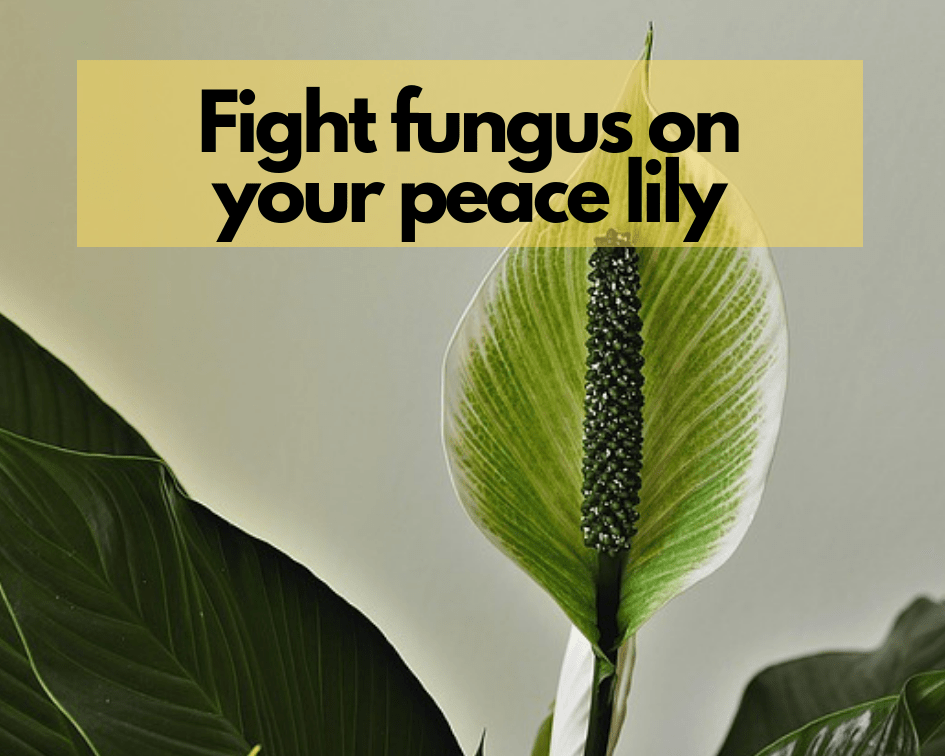This post may contain affiliate links. As an Amazon Associate we earn from qualifying purchases.
Chinese evergreen pests are often a challenge to control.
I recently went to war with a particularly nasty spider mite infestation on my majesty palm. Both myself and the plant emerged triumphantly but the poor palm bears the scars of my aggressive battle with the bugs.
It will survive, but it looks like garbage in the meantime.
While all this was happening, the emails were rolling in and one in particular caught my eye: how to get rid of spider mites on a Chinese evergreen (Aglaonema modestum).
Since I’m the self-appointed terminator of said pest, I thought I’d share with you exactly which other pests your Chinese evergreen may attract and how to get rid of them.
Chinese Evergreen Pests: Spider Mites

It’s easy to miss the symptoms of an early spider mite infestation. As it increases, however, it’s hard not to notice.
Spider mites, as their name implies, weave webs, mainly to protect their young from predators. A heavy infestation will find your Chinese evergreen covered in these webs.
These tiny arachnids can be green, red, yellow, brown or orange in color. They thrive when the air is dry air such as in the typical indoor environment.
They mainly occur on the underside of the Chinese evergreen’s leaves (which is where they lay eggs), but in a heavy infestation they take over the entire plant.
As they suck the juices from the Chinese evergreen’s leaves, the cells die and the leaves gradually turn yellow. A heavy spider mite infestation can kill the plant, so taking action immediately is critical. Spider mites are one of the more challenging Chinese evergreen pests to control.
What Gets Rids of Spider Mites on the Chinese evergreen?
When considering how to do battle with the beasts, first figure out if the plant is worth saving. I know that sounds harsh, but heavy infestations are challenging to quash.
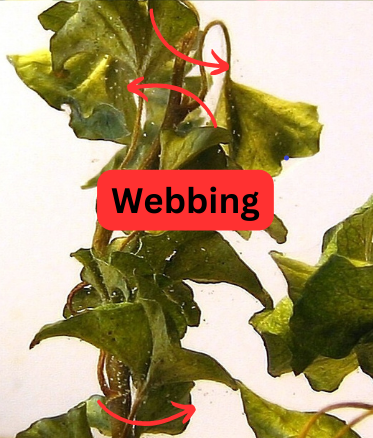
If it’s a low-value plant with a heavy load of spider mites, toss it. It isn’t worth the fight.
A small infestation can be handled by washing the infested foliage with a strong spray of water. For a heavy infestation, arm yourself with a pest control product. After burning my palm with neem, I turned to insecticidal soap spray. Specifically, Bonide’s Instecticidal Soap Spray did the trick. See the Resources section at the end of this post for where to buy.
It’s not a quick fix, either. It may take a week or longer to get rid of the spider mites on your Chinese evergreen.
And, it is very important, regardless of product you use, to keep the plant out of direct sun while it’s being treated. When the infestation is managed, wash the foliage before returning it to an area where it will get sunlight.
Another choice for effective spider mite control is predatory mites, specifically Neoseiulus californicus. This is more of an outdoor solution, unless you want to release a ton of other mites indoors.
Nah, I didn’t think so.
Read about them on the University of Florida’s website and, if you ever need to battle spider mites outdoors, you can purchase their enemies from the link in the resources section, below.
Although the Chinese evergreen is forgiving if you neglect watering, keeping the soil on the slightly moist side may help prevent a new spider mite infestation.
If all else fails, place a humidifier nearby – it will moisten the air and these little Chinese evergreen pests don’t like moist air.
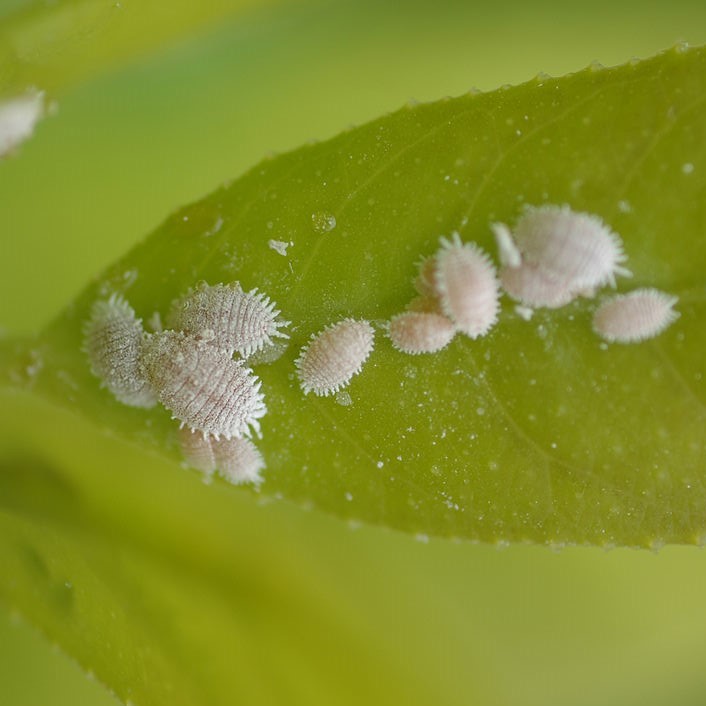
How do you get rid of mealy bugs on Chinese evergreens?
If your Aglaonema’s foliage or stems appear to be sprouting cotton, it has a mealybug infestation (Planococcus citri is the most common on indoor plants).
These small, white bugs suck the juices from the Chinese evergreen, causing stunted growth and pale foliage. Large infestations may be challenging to control so it’s a good idea to check the A. modestum periodically for signs of this pest.
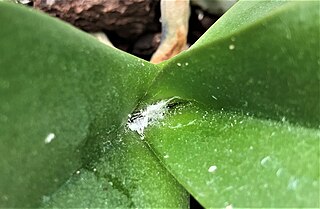
Use neem oil spray, according to label instructions, to rid the Chinese evergreen of mealybugs. PLEASE read the instructions on the back label before using. You owe it to your Chinese evergreen.
Again, avoid placing the plant in sunlight (even indirectly) while it’s being treated and rinse the product off the foliage when the Chinese evergreen pest infestation is under control.
And, for the record, only adult male mealybugs (they resemble flies) fly. Yellow sticky traps won’t help here.
How to get rid of aphids on your Aglaonema
Although aphids are more common on outdoor plants, your Chinese evergreen grown indoors isn’t immune.
Aphids are tiny and they cluster together and feed on the plant’s juices. Although the most familiar aphid is green, they can also be black, brown, yellow or red.
Manage these plant-killing pests with the neem oil. Prevent future infestations of most pests by keeping the plant’s foliage clean of dust. Wipe down the leaves periodically with a damp cloth or sponge.
Mention of a pesticide is for educational purposes only. Always follow the pesticide label directions. Ensure that you wait the required number of days between pesticide application and when you can harvest your crop (that information is on the label).
Resources
Chinese Evergreen Plant
Insecticidal Soap Spray
Predatory Mites
Espoma Neem Oil
Featured image: Mokkie / CC BY-SA 3.0






